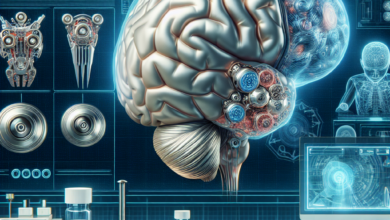Attentional Control and Parkinson’s Disease: The Role of the Subthalamic Nucleus in Neurology

Attentional Control and Parkinson’s Disease: The Role of the Subthalamic Nucleus in Neurology
Researchers at the University of Iowa have made a significant breakthrough in understanding the brain’s role in attentional control, particularly in individuals with Parkinson’s disease. The team, led by Associate Professor Jan Wessel, identified the subthalamic nucleus as a critical brain region involved in controlling attention. This finding not only highlights the complexity of the human brain but also opens up new avenues for managing symptoms of Parkinson’s disease.
Historically, the subthalamic nucleus was recognized for its role in motor control. In individuals with Parkinson’s disease, this region tends to be overactive, leading to motor impairments. To alleviate these symptoms, clinicians have used deep brain stimulation, a technique that involves implanting an electrode in the subthalamic nucleus. While successful in relieving motor symptoms, this treatment can also have cognitive and behavioral side effects, including challenges with attention and impulse control. This led the researchers to question if the subthalamic nucleus also plays a role in controlling attention and thoughts.
In their experiment, Parkinson’s patients with and without deep-brain stimulation were monitored as they focused on a computer screen. Researchers occasionally introduced a distracting sound and observed how the participant’s visual attention was affected. When the deep brain stimulation was activated, the Parkinson’s patients were unable to divert their attention away from the computer screen. This suggests that the subthalamic nucleus’s influence extends beyond motor control to attention and thought processes. These findings could help explain why Parkinson’s patients experience difficulties with cognitive tasks and impulsive thoughts and provide a foundation for new strategies to manage these symptoms.
Despite the potential side effects on non-motor functions, deep brain stimulation remains a valuable treatment for Parkinson’s. The researchers suggest that by fine-tuning the electrode placement, the side effects can be minimized. Further research is needed to optimize deep brain stimulation, balancing the benefits for motor symptoms with the potential cognitive side effects. This study, underlining the role of the subthalamic nucleus in attentional control, underscores the intricate functions of the brain and the potential for improved treatment strategies for Parkinson’s disease.





